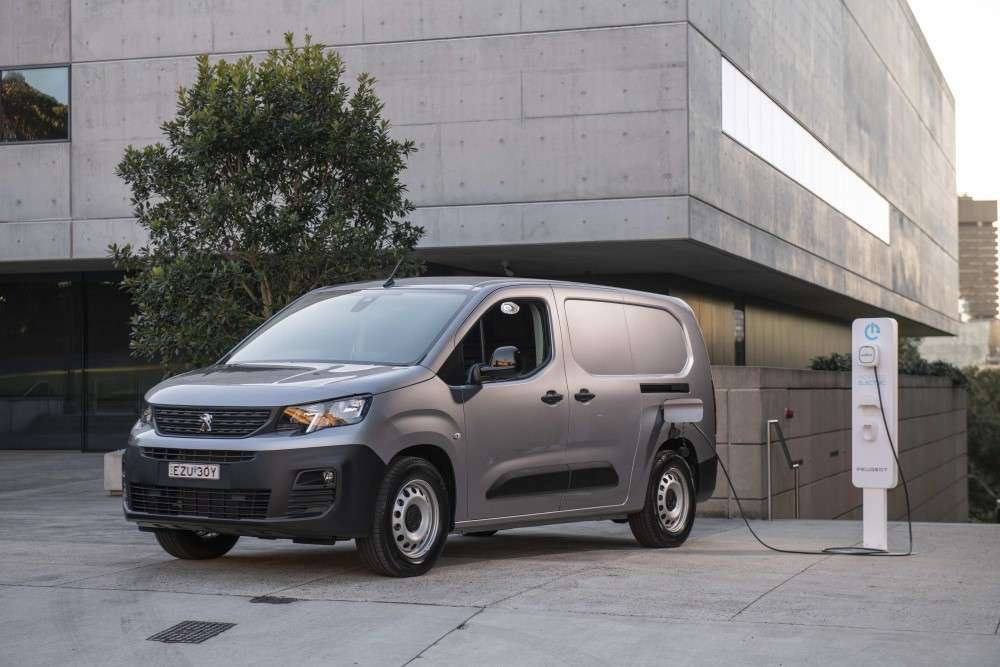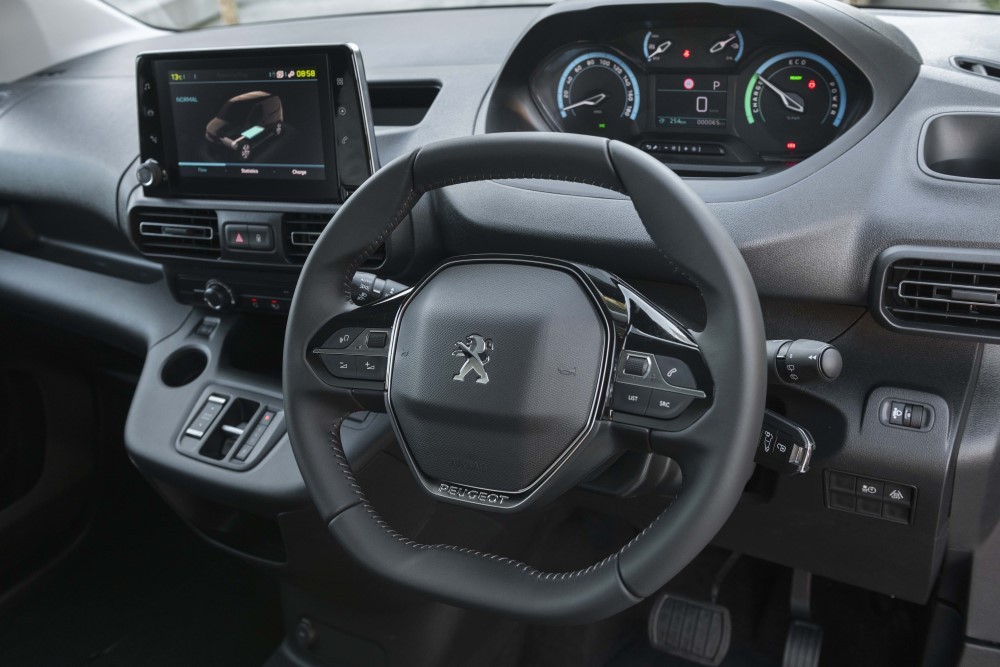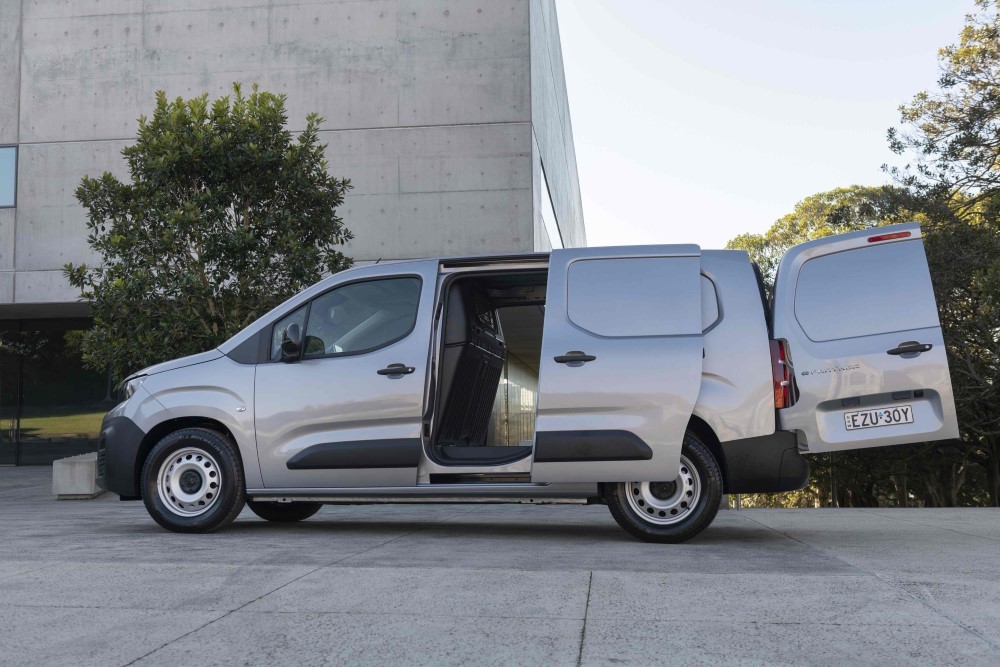
Peugeot Plugs Into an Electric Van
Peugeot plugs into an electric van
PEUGEOT has started its electrification journey into Australia with the e-Partner Van, the first fully electric vehicle for Peugeot’s Australian showrooms that arrives with a price tag of $59,990 plus costs.
The EV version joins Peugeot’s petrol-fuelled Partner van models that start at $35,606 plus costs.
Peugeot will only market the EV in one version and grade, using the long wheelbase Partner as its donor and calling it e-Partner Pro Long Auto.
The EV has a single motor rated at 100kW of power and 260Nm of torque. It has a 50kWh lithium-ion battery that Peugeot said can deliver a WLTP test range of 258km..
Like its petrol-fuelled siblings, the e-Partner was designed for the commercial van customer with priorities given to plenty of volumes and an efficient cargo space, along with ease of handling and maneuverability for the driver.
To combine a compact external dimension with a maximum loading capacity, the e-Partner has its batteries located under the floor. This ensures there is no impact on the van’s 3.9 cubic metres of loading volume, identical to the internal combustion variant.
It has a tight turning circle of 11.4m, a body length of 4.75m, a width of just over 2.10m with mirrors open and a height of less than 1.90m for ease of access to most car parks.
The dual rear swing barn doors allow for easy access when loading cargo while the six tie-down rings in the cargo bay help secure loads with a payload of up to 753kg.
Peugeot said that placing the batteries low in the vehicle results in body rigidity and the optimum weight distribution to give handling and ride comfort similar to an SUV.
It has a specially-adapted power steering system and optimised suspension comfort (similar to the internal combustion variants) to cope with different driving and road conditions, unladen or laden.
The van also has three driving modes — Eco (60kW/190Nm) for economy and a smooth drive; Normal (80kW/210Nm) for optimal everyday use; and Power (100kW/260Nm) that optimises performance when transporting heavy loads.
Unlike the petrol models, the EV’s cabin gets instruments including:
- a power meter for displaying the level of consumption (‘Eco’ for energy optimisation or ‘Power’ for maximum power) or energy recovery (‘Charge’)
- a consumption gauge for temperature comfort accessories (heating and air conditioning)
- a battery charge level gauge
- a colour matrix to view energy flows, monitor charging (current or delayed), onboard computer information and autonomy.

The 8.0-inch central touchscreen is, via a dedicated button, now also the central access point for the 'electric' menu which accesses the menus:
- "Flow" to view live energy flows,
- "Statistics" to display consumption statistics,
- "Charge" which allows you to schedule a delayed charge.
The touchscreen's infotainment capabilities include Bluetooth, Apple CarPlay and Android Auto connectivity plus a digital radio, all through a four-speaker sound system.
Peugeot said that over the petrol models, the EV’s central console has been redesigned to accommodate a new ‘e-Toggle’ gearbox control that accesses Park, Reverse, Neutral, Drive and Brake functions; and the selector switch for the three driving modes – Eco, Normal and Power.
The van gets an electric park brake (the first Partner with this feature) which fees up floor space.
Storage space includes compartments within easy reach including the dash space in front of the passenger left by the airbag, which is now a ‘bag in roof’ design. This space can hold a 15-inch computer. A cable threader also allows the computer to be left charging directly in the storage compartment.
Safety equipment includes an audible signal to alert pedestrians at speeds of up to 30km/h. This operates in forward and reverse.
It also has autonomous emergency braking (AEB) along with a 180-degree colour reverse camera plus front and rear parking sensors; six airbags, anti-lock braking system (ABS), electronic stability program (ESP), active lane-keep assist, lane-departure warning (LDW) and forward collision warning.
The e-Partner also features automatic dusk sensing headlights, automatic door locking, programmable cruise control, speed limit recognition and recommendation, and a speed limiter function.
It comes standard with a mode-three public station charging cable while a domestic socket home charging cable is available for customers to purchase. The onboard charger unit allows charging of a capacity of 7.4kW.
Charging options are:
- Domestic Socket:using a 2.3kW single-phase 10A charger, charging at home can be achieved by simply plugging into a domestic socket.
- Home Charging Station:Using a home charging station saves significant charging time, meaning drivers can recover their entire driving range in just a few hours.
- Public Charging:utilising the expanding network of public infrastructure is an easy way to top-up range on the go. Apps such as Chargefox, Plugshare and Chargepoint are great tools to help drivers plan their journeys and view real-time availability and usage.
Indicative charging times for the e-Partner via the 50kWh battery capacity include:
- Approximately 7.5 hours from 0-100% capacity via a 7.4kW Wallbox5
- Approximately 30 minutes rapid charge from 0-80%capacity via a 100kW DC Charger.

Peugeot has a five-year capped-price service program for the new EV which is: $293 for the fist service as 12 months or 25,000km; $412 for the 24month/50,000km service; $293 at 36month/75,000km; $425 at 48month/100,000km; and $307 at 60month/125,000km.
Alternatively, it offers a pre-paid service plan at $600 for three years and $1000 for five years, saving $730.
The fully electric Peugeot e-Partner is now available at authorised Peugeot dealerships and online at www.peugeot.com.au
Once you've found the right car, the next step is sorting out car finance that actually works for your budget. Credit One is Australia's best-reviewed finance broker, with 3,000+ five-star Google reviews from customers who've been through the process. Check out Credit One reviews to see what people say, or head straight to the loan repayment calculator to see what the numbers look like.
